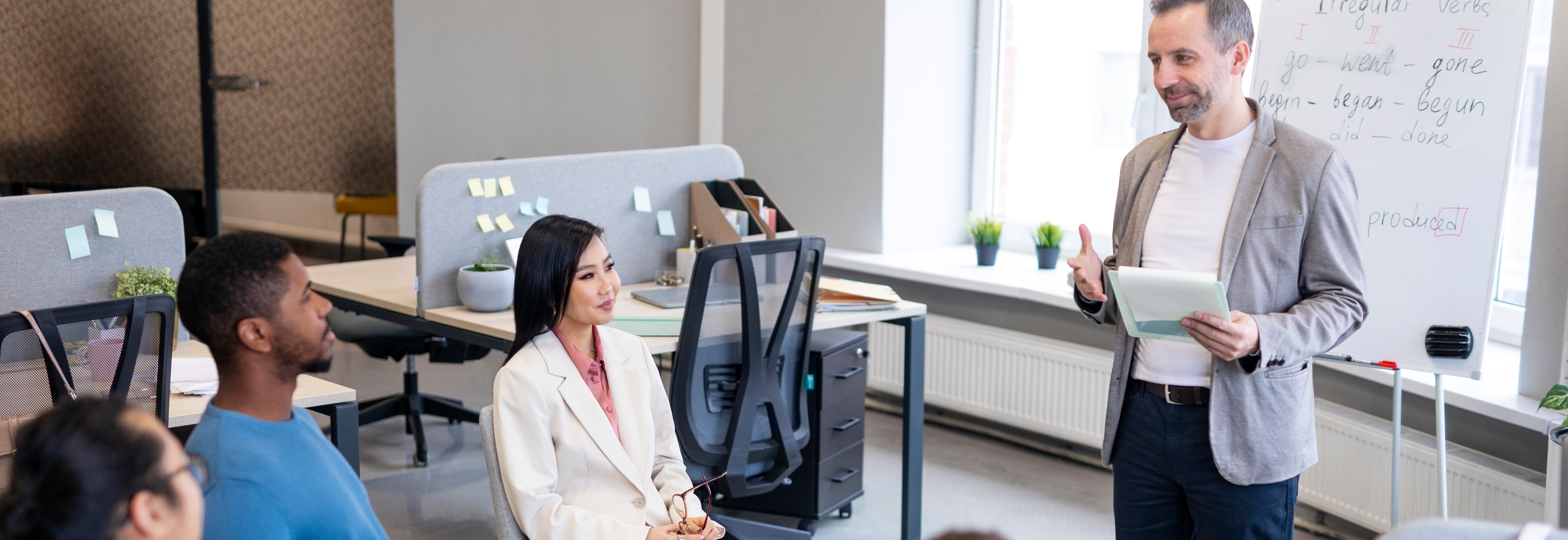I still remember the first time I participated in an online business simulation. It was a crisp Monday morning, and we were just settling into what felt like our tenth month of pandemic-era Zoom fatigue. The team had signed up for a simulation that promised to sharpen decision-making under pressure, improve collaboration, and give us insight into real-time problem-solving.
Honestly, I went in thinking it would be just another game with a few fancy charts. I was wrong.
By the end of the session, I had not only learned more about leadership and business strategy, but I had also picked up deep insights about how we respond to uncertainty. And perhaps most importantly, I realized how simulations mirror the chaos, ambiguity, and pressure we have all faced during the pandemic, both in the workplace and beyond.
Looking back now, I believe that simulations are more than just clever learning tools. They are microcosms of the real world. They can prepare teams to not only survive uncertainty, but to thrive and come out stronger.
Here are three powerful lessons I have learned from playing online business simulations. These lessons have shaped the way I work, lead, and learn during times of disruption.
1. Confusion Precedes Clarity, and That’s a Good Thing
Table of Contents
When the simulation began, I was instantly overwhelmed. Multiple dashboards, competing metrics, unfamiliar acronyms, time ticking down. My teammates were all looking at their screens trying to make sense of what was happening. I remember feeling uncomfortable, unsure, and even a little anxious.
And then, slowly, things began to make sense.
With each decision, we learned a little more. The confusion started to fade. Patterns emerged. We began anticipating market changes, forecasting better, and understanding how our decisions connected. What once felt chaotic started to feel manageable. Clarity grew from the very confusion that initially felt like a barrier.
This mirrored my experience during the pandemic perfectly.
We were all thrown into a world of remote work, uncertain job markets, and a complete shift in our routines. There were days when we felt paralyzed by ambiguity. But over time, we adapted. We experimented. We learned new tools, adjusted communication rhythms, and redefined what productivity meant.
What simulations taught me is this. Confusion is not a sign of failure. It is often a precursor to growth.
As L&D professionals or HR leaders, this is an important mindset to pass along to our teams. When people are navigating something new, whether it is hybrid work, a reorg, or an upskilling initiative, a period of confusion is not only natural, it is necessary. Rather than rushing to fix it, we can hold space for exploration and trust that clarity will follow.
2. Focus on Key Variables, Not Every Problem Needs Your Attention
In the startup simulation I participated in, there were constant demands for attention. Competitor movements. Customer feedback. Internal staffing issues. Financial forecasting. Supply chain bottlenecks. Each turn brought a new scenario to respond to.
At first, I tried solving everything. I jumped from marketing to operations to finance, reacting to every new challenge that popped up. The result was predictable. We missed the big picture. We fell behind on our core objective of profitability.
In the next round, we changed our approach. We aligned on key metrics, such as net profit and customer retention. We agreed to let some issues run their course while we doubled down on the decisions that moved those variables. The difference was dramatic.
This taught me a lesson I keep revisiting at work. When everything feels urgent, nothing is truly important.
During the pandemic, many organizations made the mistake of reacting to every disruption as if it needed immediate resolution. But high-performing teams stepped back, identified their biggest levers, and concentrated on what would move them forward strategically.
In team environments, we often reward activity rather than impact. But simulations drive home the reality that doing less, with more focus, is often the better route.
As a manager, I now guide my team to first define success, and then identify what variables truly influence it. We filter out the noise and prioritize accordingly.
If you are in a leadership role, especially during uncertain times, I strongly recommend training your team on prioritization frameworks. Better yet, have them experience it through an online simulation. Programs like Build Your Business Simulation or Diamonds of Amazonia Simulation by FocusU offer a controlled yet dynamic space where participants learn how to ignore distractions and focus on what really matters.
3. Feedback is Not Optional, It Is How You Win
One of the most powerful features of simulations is instant feedback.
Every decision we made triggered a consequence. Price a product too high, and demand would drop. Allocate too much to marketing without improving the product, and customer churn would rise. In a leadership simulation, poor delegation meant our virtual team’s morale declined. The game did not wait to give feedback at the end. It delivered it in real time.
This became the most important learning moment for me. Because feedback, whether positive or negative, is only useful if it is timely and actionable.
In real life, though, we often wait too long. Performance reviews happen every six or twelve months. By then, the lessons are distant, and the feedback feels more evaluative than developmental.
Simulations reminded me that when feedback becomes part of the flow, rather than an event, learning accelerates.
If you are trying to build a feedback culture in your organization, simulations offer a great entry point. They reduce the fear factor. Feedback becomes data, not personal criticism. It becomes a compass, not a verdict.
After the simulation, I carried this mindset into how I lead and receive feedback. I began asking my team simple questions more often:
- What is something I could have handled better this week?
- Was that last meeting productive for you?
- Are we solving the right problem, or just the loudest one?
And I encouraged them to ask each other similar questions. Over time, our conversations became more open, real, and growth-oriented.
Simulations Are Not Just Games, They Are Practice for the Real World
When I think about why simulations are so powerful, especially in the context of a global disruption like the pandemic, it comes down to this. They allow us to practice without consequences.
In real life, mistakes can be costly. A bad call can lead to lost revenue, poor morale, or missed opportunities. But in simulations, we are free to experiment. We can try bold moves, recover from missteps, and learn fast.
That safe space to fail and reflect is priceless.
This is what makes simulations such an impactful tool in corporate learning and development. They combine the engagement of play with the seriousness of purpose.
If you are part of an L&D team or managing capability development in your organization, I would strongly recommend exploring online simulation-based learning experiences. They work exceptionally well for building:
- Business acumen
- Decision-making under pressure
- Strategic thinking
- Team collaboration
- Agile mindset
And because they are digital, they are ideal for hybrid or fully remote teams.
Final Thoughts: Learning to Thrive, Not Just Survive
We often talk about resilience during crises. But resilience is not just about enduring difficult times. It is about learning from them. And even growing stronger because of them.
Online simulations taught me that the skills we need to thrive, clarity under pressure, prioritization, feedback-driven improvement, can be cultivated. And they can be learned in an environment that is immersive, challenging, and safe.
When I look back on the simulation sessions I have experienced, I do not just remember the decisions I made. I remember how I felt. The tension. The uncertainty. The pride when something clicked. The satisfaction when a teammate’s insight turned the game around. And I remember how closely it all mirrored the real-world challenges I was facing at the time.
The pandemic has tested all of us. But it has also taught us that learning does not stop just because we are remote. Growth does not pause because the world is uncertain. And leadership, perhaps now more than ever, is about being open to learning every single day.
If a simulation can give you that experience in 90 minutes, I would say it is time well spent.












